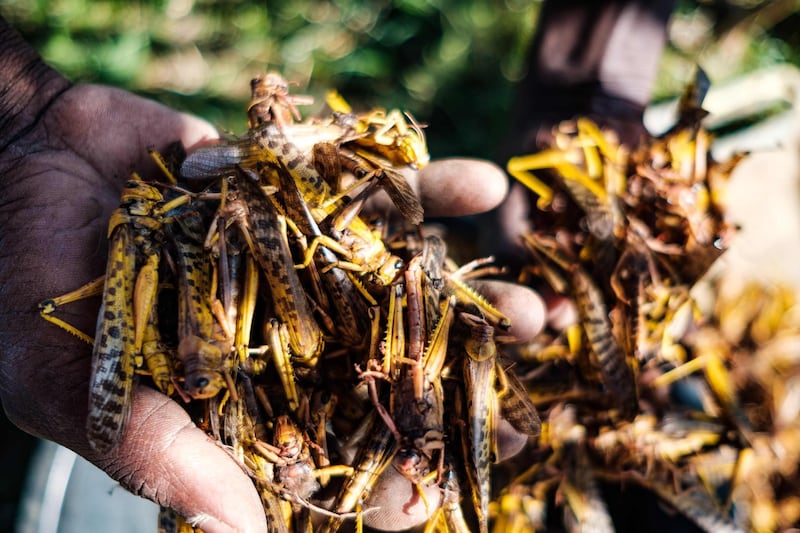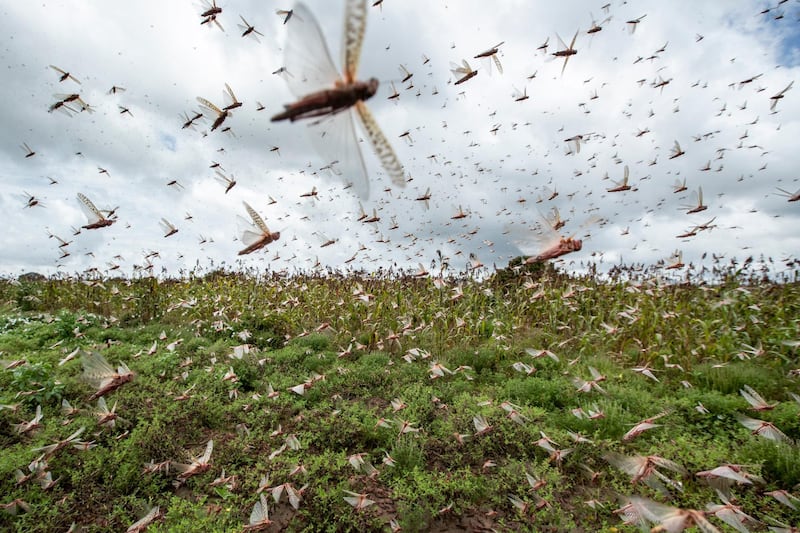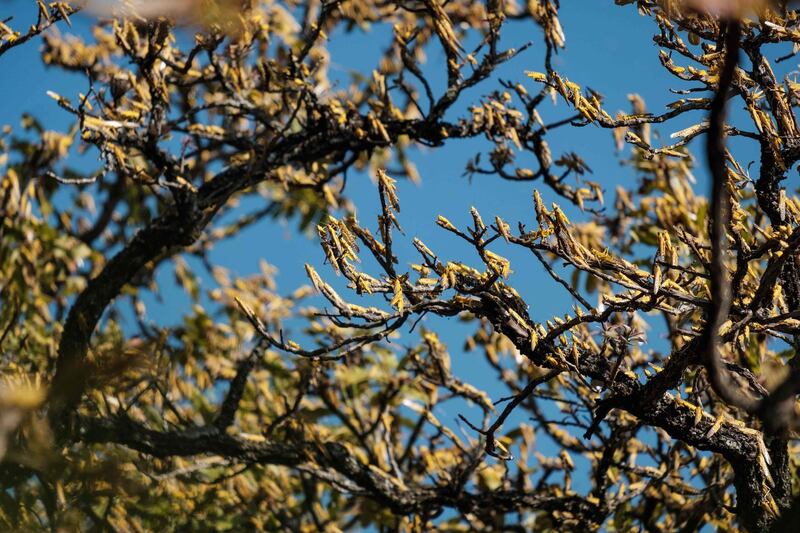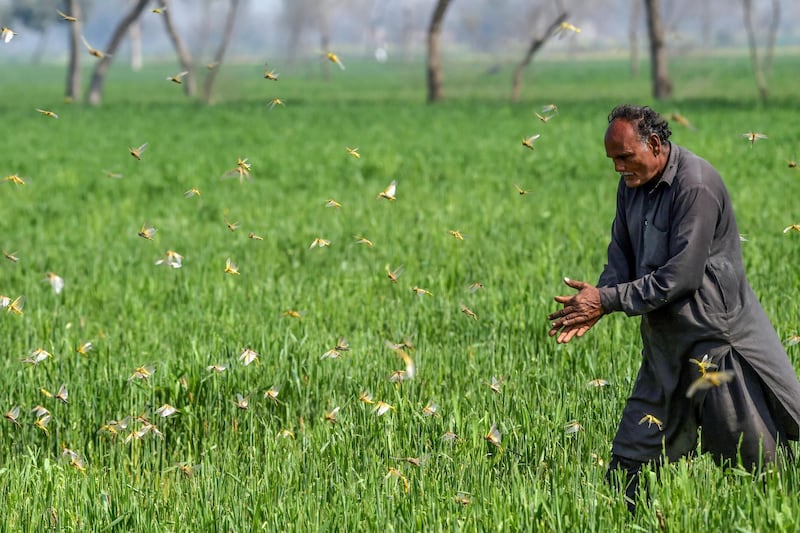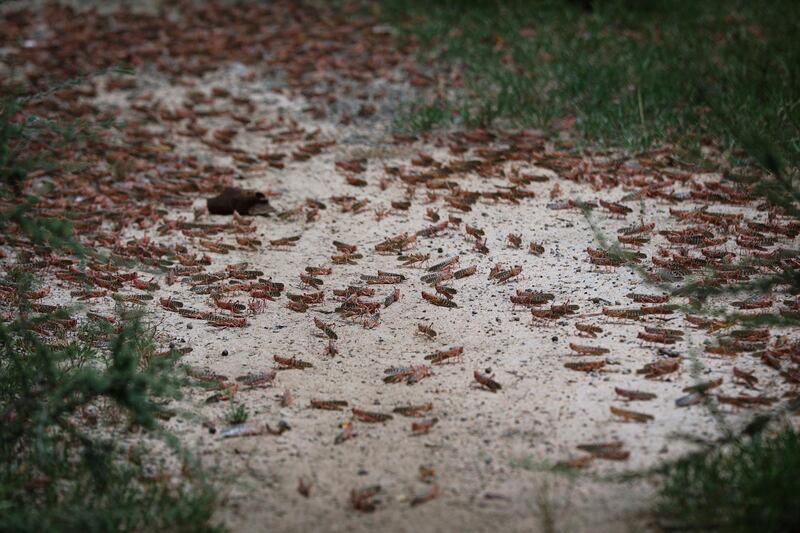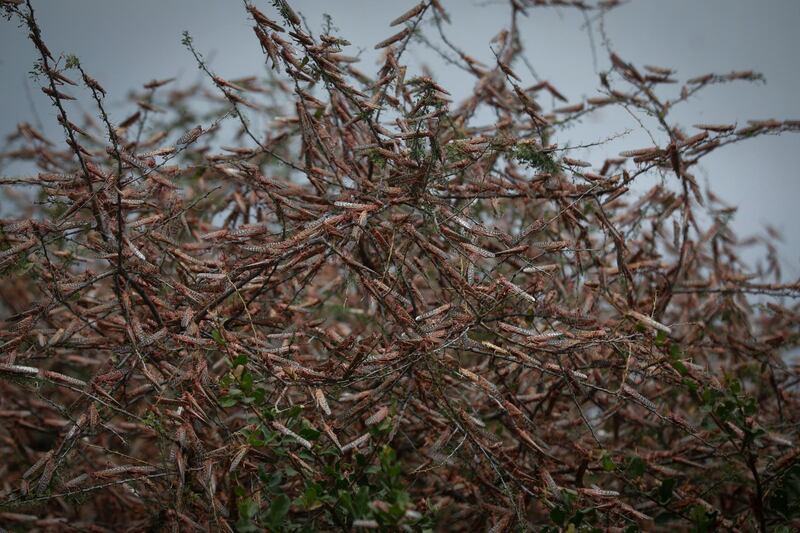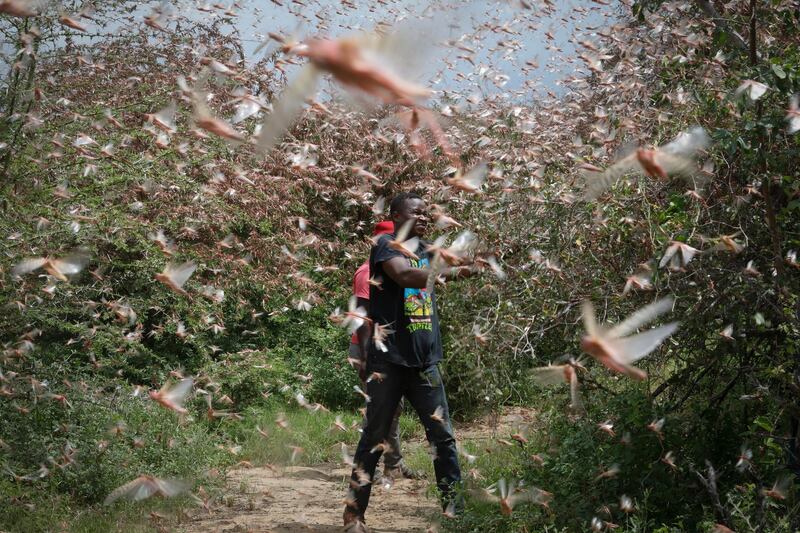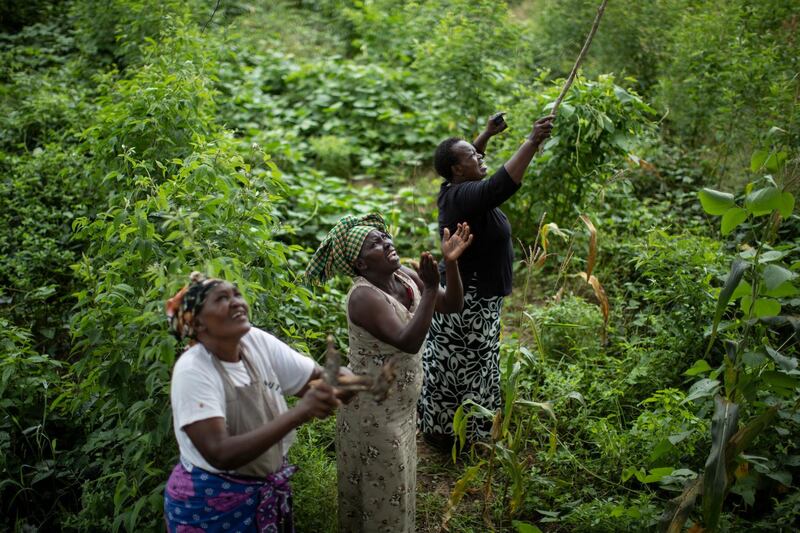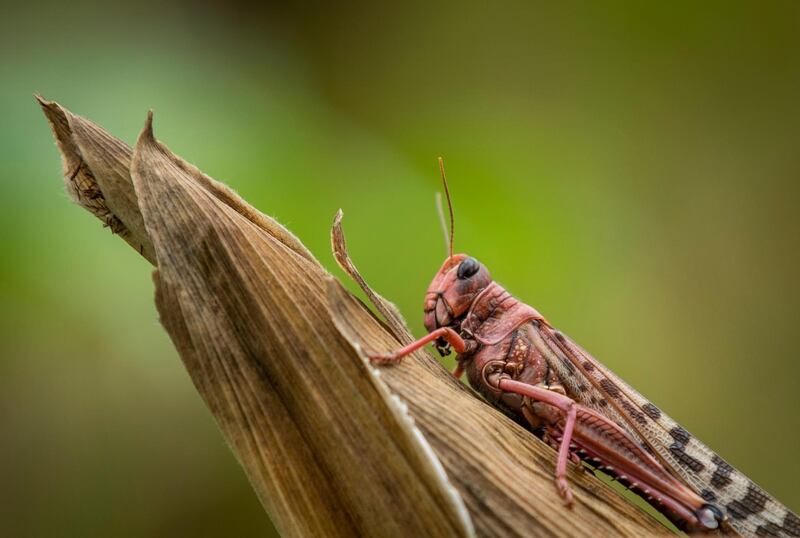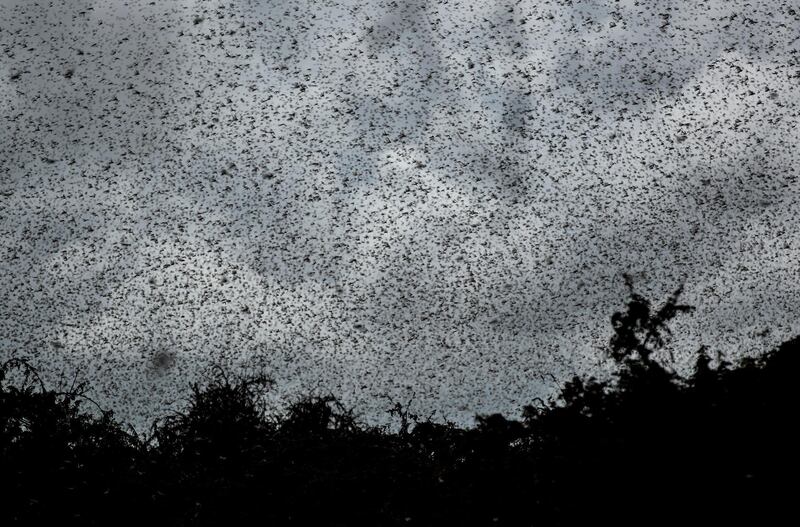Somalia's Agriculture Ministry on Sunday called the infestation of locusts a national emergency and a major threat to the country's fragile food security situation.
The ministry said the "uncommonly large" locust swarms were consuming huge amounts of crops.
Experts say the swarms are the result of extreme weather swings, and Somalia's declaration is aimed at boosting national efforts to tackle the insects.
It was the first country in the region to declare the pests a national emergency.
The locusts have caused what the Food and Agriculture Organisation has termed the "worst situation in 25 years" in the Horn of Africa.
"Food sources for people and their livestock are at risk," the ministry said.
Desert locusts are a species of grasshopper that live solitary lives until a combination of conditions promote breeding and lead them to form massive swarms.
"Given the severity of this desert locust outbreak, we must commit our best efforts to protect the food security and livelihoods of Somali people," said the Minister of Agriculture, Said Iid.
"If we don't act now, we risk a severe food crisis that we cannot afford."
The regional Food Security and Nutrition Working Group said East Africa was already experiencing a high degree of food insecurity, with more than 19 million people facing acute hunger.
The large locusts swept into Kenya from Somalia and Ethiopia after unusually heavy rains in recent months, destroying crops in some areas and threatening millions of vulnerable people with starvation.
In swarms the size of major cities, the locusts also have affected parts of Sudan, Djibouti and Eritrea, whose Agriculture Ministry said the military and public were fighting to bring the infestation under control.
In Kenya, small planes packed with pesticides are trying to battle the billions of locusts.
Just five planes are spraying as Kenyan and other authorities try to stop the locusts from spreading to neighboring Uganda and South Sudan.
The UN has said $76 million (Dh279.1m) is needed immediately to widen such efforts across East Africa.
A quick response is crucial. Experts warn that if left unchecked, the number of locusts could grow by 500 times by June, when drier weather will help to bring the outbreak under control.
Kenya's Agriculture Minister has acknowledged that authorities were not prepared for the scope of the infestation this year.
The FAO says that if the current invasion gets worse and cannot be contained for a year or more, it would become what is known as a "plague" of locusts.
There have been six major desert locust plagues in the 1900s, the last of which was in 1987-89. The last time swarms were this big was in 2003 to 2005.
